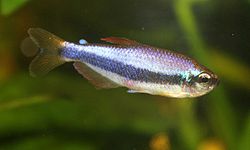| Inpaichthys | |
|---|---|
 | |
| Inpaichthys kerri | |
| Scientific classification | |
| Kingdom: | Animalia |
| Phylum: | Chordata |
| Class: | Actinopterygii |
| Order: | Characiformes |
| Family: | Acestrorhamphidae |
| Subfamily: | Thayeriinae |
| Genus: | Inpaichthys Géry & Junk, 1977 [1] |
| Type species | |
| Inpaichthys kerri Géry & Junk, 1977 [1] | |
Inpaichthys is a genus of freshwater ray-finned fishes belonging to the family Acestrorhamphidae, the American characins. [1] The fishe sin this genus are found in South America and commonly seen in the aquarium trade. [2]